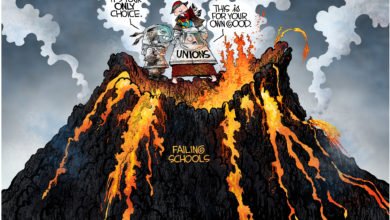4th Quarter GDP Number Misleading
The BEA published a revised report on the U.S. G.D.P. for Q4 2009. The revision was up .2 points from an already high 5.7%. Taken at face value, 5.9% growth in the economy in a three month period sounds fantastic, but digging into the numbers and methodology aid in the understanding of why this is not as great as it sounds.
The BEA uses the expenditure method of GDP calculation and real GDP (the 5.9%) number is adjusted for the value of money (inflation/deflation). It basically counts the money used to purchase goods and services. GDP is a summation of the money spent in personal consumption (rent, food, clothes, etc), business investment (new machines, inventory, buildings, government spending (government salaries, government investment, finished goods), and exports minus imports (the trade deficit).
Breaking apart the GDP report along those categories reveals that most of the GDP growth was in the government sector, and surprisingly, not on defense. Federal government spending on the military actually dropped by 3.5%, where the largest portion of GDP growth came was in federal nondefense spending which increased by a whopping 8.4% in the 4th quarter after having increased 7% in the 3rd. This category does not cover transfer payments like Social Security or unemployment benefits so it it mainly made up of the salaries paid to government employees.
Not all government spending was up, local and state governments, which must balance their budgets, droppedspending by 2% following a drop of .6% in the 3rd quarter.
70% of the American economy is based on consumption. The real personal consumption expenditures number was only up 1.7% which is lower than the 3rd quarter number of 2.8%. This illustrates that the U.S. consumer is slowing down spending which will negatively impact the economy.
The true economy, businesses, slowed down the pace at which they were cutting inventories which was 3.88% of the GDP number. This could mean either of two things, either businesses decided to produce more goods to stay closer to an elevated demand, or consumers bought less which would slow down the rate at which inventories fall if no production change is implemented. Considering that the personal consumption number slowed in the 4th quarter, it’s a good bet inventories dropped slower because fewer consumers purchased those products.
To sum it all up, without the misleading slow down in inventory declination and if we disregard the fact that the government grew itself outlandishly while gathering a monstrous deficit, the remaining GDP gain is negligible. Even the BEA’s report lays it out that way:
The decrease in real GDP in 2009 primarily reflected negative contributions from nonresidential fixed investment, exports, private inventory investment, residential fixed investment, and personal consumption expenditures (PCE), that were partly offset by a positive contribution from federal government spending.
Translation: The economy stank because consumers weren’t buying anything, but this was partially offset because the government had no trouble growing.




